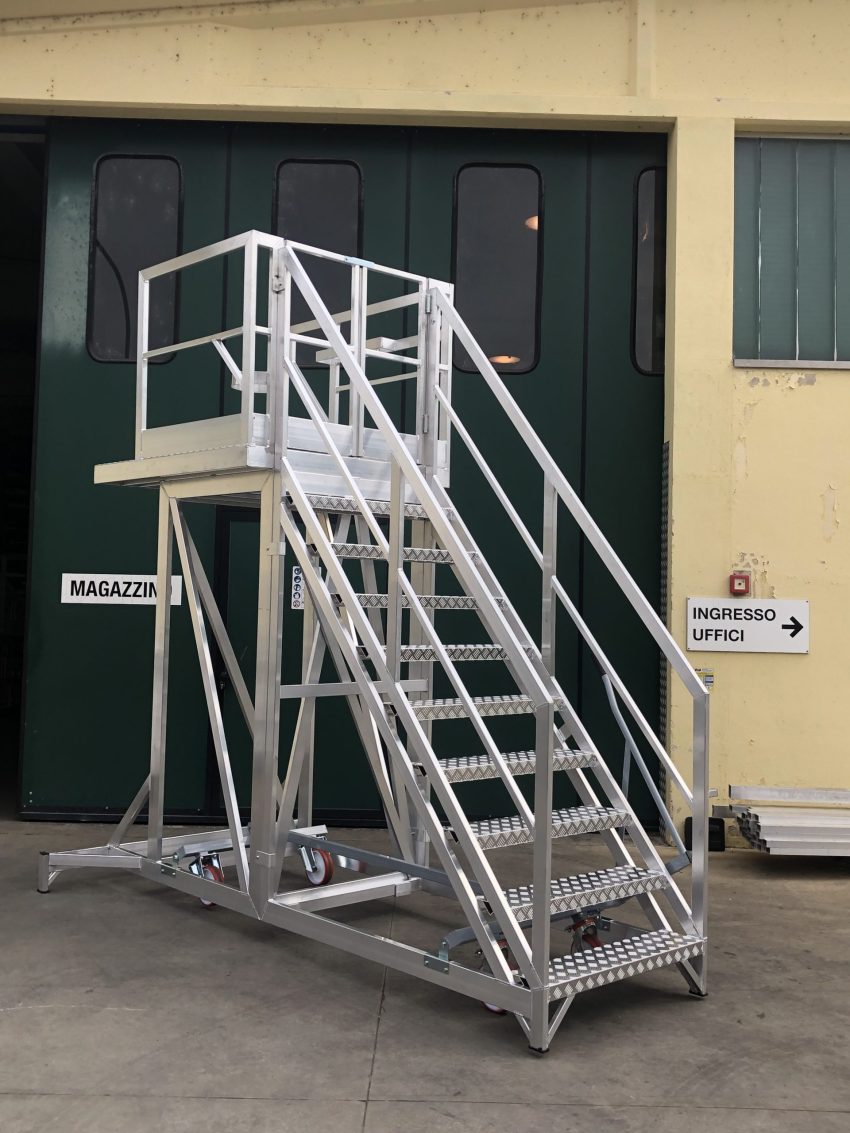Most of the benefits of platform ladders readily apply across all such products, but due diligence in selecting the most appropriate unit must include task height, load rating, material and frequency of transport. While aluminium continues to be the material of choice for general building trades because of its strength/weight ratio, fibreglass is a must-have adjacent to energised conductors or where electromagnetic interference can affect sensitive equipment. The platform will be at or near waist height with respect to the target if the nominal height of a ladder is properly selected, thus quadruped stability can be maintained with little or no overhead reaching, which is destabilizing and unsafe. Features like automatic locking spreaders, side rails that are non-conductive, and replaceable feet for both concrete and compacted soil will be things to look for. Finally, confirm that the manufacturer specifically certifies that it is manufactured to AS/NZS 1892, and provides a specific maintenance manual, as these records expedite the induction process and also helps with the routine inspection.
Worker Fatigue Is Reduced With Ergonomic Design
The heavy duty platform ladder is designed for ergonomic efficiency, because muscle fatigue is an insidious threat. Using a narrow rung means that workers have to keep their calf muscles constantly working to stabilise the ankle joint. Over the course of hours fatigue takes a toll; it dulls proprioception and beckons missteps. The platform ladder has a flat, open deck and allows the sole to sit naturally, transferring weight through the heel and forefoot. This means better blood flow, muscle fatigue takes longer to set in and mental focus is also heightened which is key in hot Aussie summers as the dehydration effect can double up on tiredness. Users keep three points of contact, with the handrail easily accessible, and are not required to bend and twist to reach the handles, which protects the lower back and shoulders from the cumulative strain of this type of motion.
Added Layers of Safety with Built-In Guardrails and Handrails
Most platform ladders have an integral guardrail system that wraps around the standing surface on three sides and extends at least to waist level. It provides the all-important psychological signal to workers — Do not walk backwards off the edge — and functions as a structural stop if a momentary lapse in judgement were to occur. To finish off the enclosure, some models have either a gate that opens inward or a self-closing bar for unbroken fall protection when both hands are busy with tools or materials. Electricians and telecommunication crews in particular will find that variants made with fibreglass stiles further reduce electrical conduction risk and allow the ladder to be used in various trades without any additional insulating attachments.
Australian Standards and Regulations Compliance
The AS/NZS 1892 series sets out requirements for the design, testing, selection and maintenance of ladders in Australia. Update of previously published Part 5 as 5.2 addresses safe practices and maintenance of the portable ladder, reiterating the universal focus within the industry on rated load capacity, slip resistance and marking (Standards Australia). Industrial duty platform ladders generally have a 150kg rating, and they are cyclic stressed up to several times that number. The use of such equipment simplifies WHS paperwork because a supervisor can prove the on-site height-access tools comply with perform equal to national standards. In addition, worksites that specify AS-compliant ladders are favourably viewed by regulators and insurance providers, leading to more seamless workplace inspections, reduced stoppages, and potentially cheaper premiums.
Final thoughts
Platform ladders from equip2go excel across a wide range of uses – residential carpentry and shopfitting through to civil maintenance and warehouse order-picking. Because they are self-supporting, they do not rely on adjacent walls or columns for stability and can be run in expansive open spaces where crews cannot work safely while erecting scaffolding.

